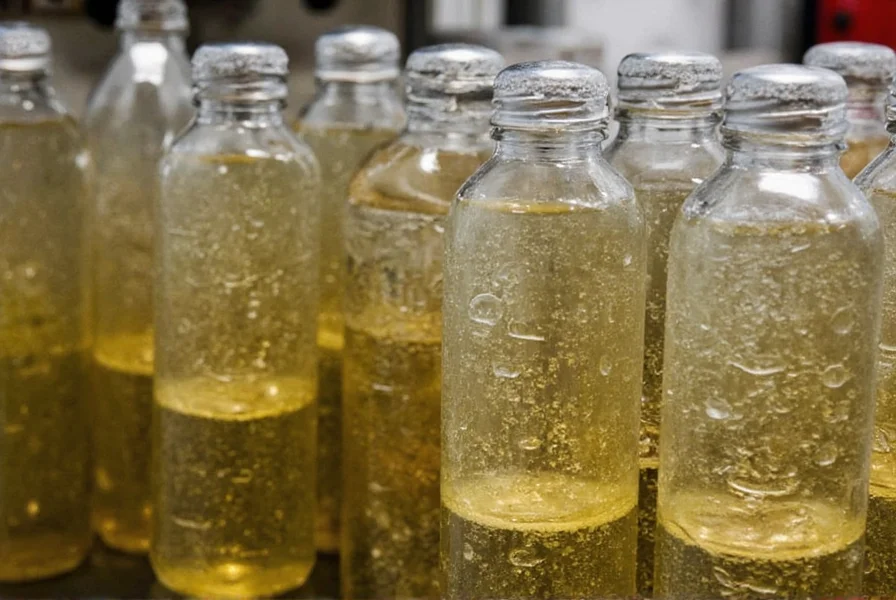Ginger ale has evolved from a fermented medicinal drink to a globally popular carbonated beverage. Understanding how this refreshing drink is made reveals both historical traditions and modern manufacturing techniques that create the crisp, spicy-sweet beverage enjoyed worldwide.
The Essential Ingredients in Ginger Ale Production
Creating authentic ginger ale starts with quality ingredients. The core components include:
- Fresh ginger root - Provides the signature spicy flavor and aroma
- Sweeteners - Typically cane sugar, high-fructose corn syrup, or alternatives like honey
- Carbonated water - Creates the characteristic fizz
- Citric acid - Balances sweetness and enhances flavor
- Natural flavorings - Sometimes lemon or lime juice for complexity
The specific ginger variety and preparation method significantly impact the final product's flavor profile. Premium ginger ales often use Jamaican ginger for its robust, spicy character, while milder versions might incorporate African or Indian ginger varieties.

Traditional Fermented Ginger Ale Process
Historically, ginger ale was a naturally fermented beverage with slight alcohol content. This traditional method creates a more complex flavor profile through natural fermentation:
- Create a ginger bug - A starter culture made from fresh ginger, sugar, and water that captures wild yeast
- Prepare ginger tea - Simmer grated ginger in water to extract flavor compounds
- Add sweetener - Dissolve sugar into the cooled ginger tea
- Combine with starter - Mix the ginger tea with the active ginger bug
- Primary fermentation - Allow mixture to ferment at room temperature for 3-7 days
- Bottle conditioning - Transfer to sealed bottles for secondary fermentation creating natural carbonation
- Refrigerate - Chill to slow fermentation and preserve carbonation
This traditional ginger ale production process yields a beverage with subtle alcohol content (typically under 0.5%) and complex flavor notes developed through natural fermentation. The fermentation process also creates beneficial probiotics, making traditional ginger ale somewhat similar to other fermented beverages like kombucha.
Modern Commercial Ginger Ale Manufacturing
Today's mass-produced ginger ale follows a different process that ensures consistency, shelf stability, and immediate carbonation without fermentation. The commercial ginger ale production process involves:
| Production Stage | Key Process | Duration |
|---|---|---|
| Ginger extraction | Steam distillation or solvent extraction of ginger flavor | 2-4 hours |
| Base syrup creation | Combining sweeteners, ginger extract, citric acid, and flavorings | 30-60 minutes |
| Carbonation | Mixing syrup with pressurized carbon dioxide | Continuous process |
| Filtration | Removing impurities while preserving carbonation | 15-30 minutes |
| Bottling | Filling containers under pressure to maintain carbonation | High-speed continuous |
Major manufacturers use specialized equipment to extract ginger flavor compounds efficiently. The ginger undergoes processing to create a concentrated ginger flavor that maintains consistency across batches. Unlike traditional methods, commercial production doesn't rely on fermentation for carbonation but instead injects carbon dioxide directly into the finished beverage.
Quality control measures ensure each batch meets specific standards for ginger intensity, sweetness level, and carbonation. The ginger content in commercial products typically ranges from 0.1% to 0.5% of the total formula, with premium brands often using higher concentrations for a more pronounced ginger flavor.
Differences Between Dry and Golden Ginger Ale
Two primary styles of ginger ale exist in the market, each with distinct production approaches:
- Dry ginger ale - Originating in Canada, features a lighter color and more subtle ginger flavor. Made with less ginger extract and higher carbonation levels. Often used as a mixer in cocktails.
- Golden ginger ale - The original style with stronger ginger flavor, amber color, and less carbonation. Contains higher ginger concentration and often includes additional spices.
The production differences mainly involve ginger concentration, additional flavorings, and carbonation levels. Golden ginger ale typically uses a higher proportion of ginger extract and may include additional spices like cinnamon or cloves, while dry ginger ale emphasizes crispness and mixability with other beverages.
Making Ginger Ale at Home: Simplified Approach
For those interested in homemade ginger ale production without fermentation, a simplified method offers immediate results:
- Peel and grate 1 cup of fresh ginger root
- Simmer ginger in 4 cups of water for 20 minutes
- Strain and cool the ginger tea
- Add 1 cup of sugar or honey while the tea is still warm
- Chill the mixture completely
- Pour over ice and top with carbonated water
This quick ginger ale preparation method skips the fermentation process while still delivering fresh ginger flavor. For best results, use high-quality carbonated water and adjust sweetness to personal preference. The homemade version allows customization of ginger intensity, making it perfect for those seeking stronger ginger flavor than commercial products provide.
Quality Indicators in Ginger Ale Production
Several factors determine the quality of finished ginger ale:
- Ginger intensity - Measured by the noticeable heat and flavor of ginger
- Balance - Proper ratio of sweetness to ginger spiciness
- Carbonation level - Appropriate fizz that complements rather than overwhelms
- Clarity - Clear appearance without cloudiness (except in artisanal varieties)
- Aftertaste - Clean finish without artificial or chemical notes
Professional tasters evaluate ginger ale using a standardized approach, assessing appearance, aroma, flavor balance, mouthfeel, and overall drinking experience. The best ginger ales showcase the distinctive warmth of ginger without excessive sweetness masking the primary flavor.










 浙公网安备
33010002000092号
浙公网安备
33010002000092号 浙B2-20120091-4
浙B2-20120091-4